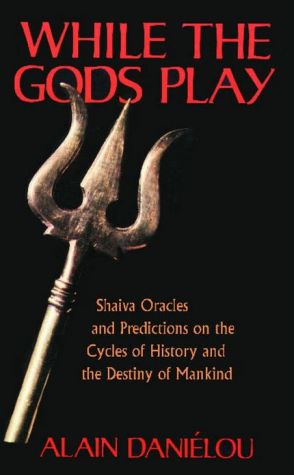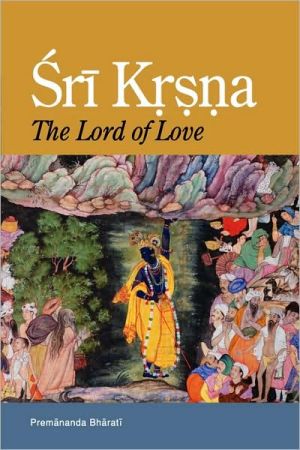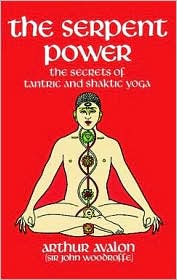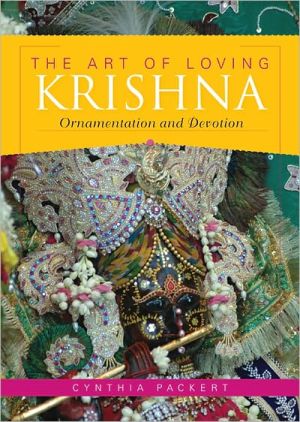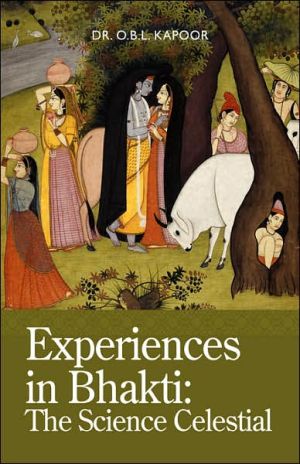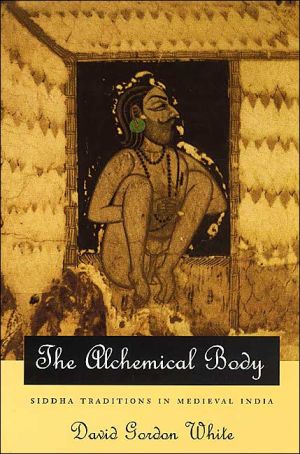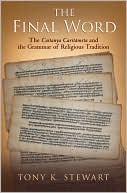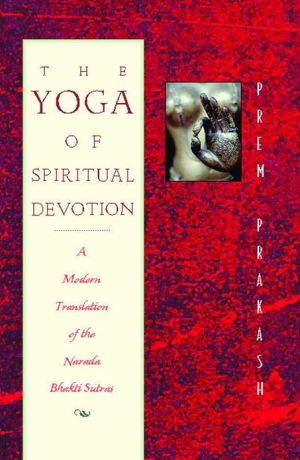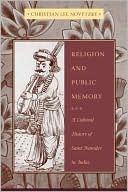While the Gods Play: Man & Universe According to the Shaiva Tradition
According to the early writings of the Shaiva tradition—still alive in India and dating back at least 6,000 years—the arbitrary ideologies and moralistic religions of modern society signal the last days of humanity heading toward destruction.\ This prediction is only a fragment of the vast knowledge of Shaiva wisdom, author Alain Danielou as assimilated and reviewed essential concepts of the Shaiva philosophy and its predictions. Clearly expressed in the ancient teachings, these concepts are...
Search in google:
Examines how visionaries of ancient Shaiva wisdom defined our role in creation, how we have abandoned this role, and action we can take to creatively influence our destiny. The author spent more than 20 years in India and was one of the most distinguished orientalists.One of the most distinguished living orientalists and a friend of Stravinsky, Jean Cocteau, and Nabokov, Daniélou spent more than 20 years in India studying music and philosophy. He wrote the acclaimed Gods of India and Shiva and Dionysus and produced a series of ethnic music recordings for UNESCO. Formerly director of the International Institute for Comparative Music Studies in Berlin and Venice, he is a Chevalier de la Légion d'Honneur, Chevalier des Arts et des lettres, and Officier du Mérite National.
Abs on the Ball\ Introduction\ Our Center, Our Powerhouse\ When I first told people I was writing a new book called Abs on the Ball, numerous responses and reactions found me. I was reminded that for many our abdomens are an emotionally charged part of the body, a barometer of strength and vulnerability. One man, hiding behind a deep laugh that made his own belly quiver, joked about being 'ruled by his stomach.' A woman spoke about her pitch-perfect intuition, inherited from her grandmother, allowing her to discern a situation 'from her guts.' Even pronouncing the word 'abs' caused people to physically adjust their bodies, shift forward in their chairs, or stand taller. Others grabbed their bellies, folding the flesh this way and that; or hid their midsection behind grim, folded arms. One woman wryly expressed interest in if I would be baring my own belly for the book's cover.\ Joseph Pilates, the founder of the famous Pilates Method of body conditioning, saw the abdominal area as the center, or powerhouse, of the body. He perceived the powerhouse or 'girdle of strength' as the area between the bottom rib and the pelvis, the region that connects the abdomen with the lower back and buttocks. This circular belt of supporting abdominal and spinal muscles was for Pilates, who studied yoga and zen meditation, a mental and spiritual center as well as a physical, gravitational one. This is why there is talk in a Pilates class, as well as in other mind-body disciplines, of the importance of being emotionally, not just physically supported. To lose one's center is to become unhinged and unfocused, susceptible to the chaos of the world around you. 'Strengthening the powerhouse' is not simply about toning the waist or sculpting the perfect six-pack. It is about finding balance and serenity to live in the world as it is.\ Why have I chosen a Pilates approach to Abs on the Ball even though some of the exercises presented here are not Pilates in origin? Notwithstanding the power of having a strong emotional center, the answer is a physical one. One of the key principles of the Pilates Method is that movement should be initiated from the Powerhouse. So before each Pilates exercise one braces the core by pulling in the navel and engaging the deep centering muscles. The goal is to keep the mid-section still while precise movements of the arms and legs are added. Each and every time! No wonder that participants new to Pilates first notice changes in their waistbands or that many in the fitness and rehabilitation world believe that the Pilates approach is the most effective and safe way to strong abdominals. Tummies flatten, pants hang loose, and low backs resist pain. But there is more going on here than meets the eye.\ Magic, As Long as the Correct Muscles are Targeted\ The Pilates approach will work its magic on your abdominal center as long as the proper muscles are taught to work. If the correct muscles are not targeted, and the exercises are not performed properly, the benefits of a secure back and optimal posture will not be guaranteed. Later, we will see how traditional sit-ups and ab machines actually limit the degree to which abdominal muscles can be trained. We will also understand how important it is that the body, specifically the pelvis, is in the correct position and the role that quality of movement plays in abdominal training.\ Experts in the field of rehabilitation have known for a while that a strong abdominal core protects the spine but they were never completely sure how. In Rick Jernmett's excellent book Spinal Stabilization: The New Science of Back Pain, the role of the abdominals, especially the role that the deepest abdominal muscles have on the stabilization of the spine, is spelt out. He explains that the deep transversus abdominis attaches directly onto the spinal column and is thus able to 'stabilize individual vertebrae of the lower back, preventing excess sliding, bending, and rotation motions.' Jemmett, a physical therapist, lecturer, as well as golfer, runner and skier, reviews the latest research from Canada, the United States, Japan, and Australia on the role of the spinal column and its muscles. He concludes that various muscles of the spine have different functions. The deepest muscles and ligaments steady the spine and act as 'position sensors' supplying the brain with critical information on the position of the joints of the vertebrae. The next layer is the 'stabilizers', the deep muscles of the abdominals and back. These are the key players in the Powerhouse and their function is to stabilize the low back and spine and keep it free from pain. Finally, the outer layer consists of large superficial muscles, sometimes called the Prime Movers. The Prime Movers create powerful, one-off movements like extending the spine or lifting a leg or arm. The superficial muscles should be added into the picture only when the stabilizers provide a strong foundation for them.\ As this important new information spreads into the fitness world more trainers and instructors are teaching the technique of 'bracing the abs' or 'moving from the core'. But before students and trainers alike can do this properly they need to make doubly sure they are targeting the correct muscles. How can the average person or athlete distinguish between a deep or superficial muscle? What will they feel if the correct connection is made? And once a deep muscle is located and trained how can it be integrated back into a healthy movement pattern?
Note on the Transliteration of Sanskrit Terms\ Introduction to the American Edition\ PART ONE: THE HUMAN ADVENTURE\ 1. Origins\ The Dravidians, 6 / The Aryans, 9\ 2. The Religions of the Kali Yuga\ Shaivism, 15 / The Return of Arihat, 16 / Gosalii, 17 / Mahavfra, 22 / Gautama Buddha, 23 / The Religion of Nature and the Religion of the City, 24 / The Kali Yuga in the World, 25 / The Shaiva Revival, 27 / Lakulisha, 27 / Mahayana, 29\ 3. Rediscovered Tradition\ The Texts, 31 / Hindu Decadence, 35 / The West, 38 / India Today, 39\ PART TWO: SHAIVA PHILOSOPHY\ 1. The Ways of Knowledge 43\ Approaches (Darshana), 43\ 2. Valsheshika and Nyaya 46\ Science and Logic, 46 / The Experimental Method (Vaisheshika), 47 / Logic (Nyaya), 50 / Aphorisms of the Nyaya, 53\ 3. The Samkhya: The Study of the Macrocosm\ The Quest for Constants (Akshara), 57 / The Texts of the Samkhya, 58 / Concepts of the Samkhya, 59 / Nature and Perception, 63 / The Three Tendencies of Prakriti, the Nature of Nature, 65 / The Definables (Tattva): The Twenty-five Constituents of the World, 67 / The Plan (Purusha), 67 / The World-Substance (Prakriti), 68 / Cosmic Intelligence (Mahat), 69 / The Principle of Individuality (Ahamkara), 69 / The Modes of Interaction of Matter (Tanmatra), 71 / The Principles of the Senses (Mahabhuta), 71 / The Powers of Perception and Action (Indriya), 73 / The Living Being, 75\ 4. The Exploration of Man's Inner Universe\ The Being of Flesh and the Being of Knowledge, 78 / The Sexual Body (Linga-Sharira) or Transmittable Body, 79 / The Nature of the Transmigrant Body, 81\ 5. The Being of Knowledge\ Universal Law (Sanatana Dharma) and the Heritage of Knowledge, 84 / The Seers (Rishi), 86 / The Sacred Books, 87\ 6. Yoga\ Yoga: Study of the Microcosm, 89 / Method, 90 / The Structure of Living Beings, 92 / The Five Vital Energies (Prana), 92 / Magic Powers (Siddhi), 94 / Reincarnation, 97 / Transubstantiation, 98 / Liberation (Moksha), 99 / Immortality, 100 / Yoga and Tantrism, 100 / Aryanized Yoga, 101\ PART THREE: THE MIMANSA: THE RELIGIOUS, RITUALISTIC, AND MYSTICAL APPROACH\ 1. The Two Mimansa\ The Gods, 109 / Aspects of Maheshvara, 111 / Shiva, Tamas, 112 / Sattva, the Goddess, and Vishnu, 112 / Rajas, Prajapati-Brahma, 114 / Symbols of the Gods, 114 / The Cult of the Linga, 115 / The Assimilated Gods, 116 / Monotheism, 117\ 2. The Doctrine of the Pashupata\ The Teaching of Lakulisha, 120 / Texts, 121 / Pashupati: Lord of the Animals, 122 / Pati: The Herder, 122 / Pashu: The Animal, 123 / Pasha: The Snare, 123 / The Creative Power of the Sovereign Being (Ishvara-Kartri-Vada), 124 / The Cause (Karana), 124 / The Work (Karya), 125 / Divisibility (Kala), 125 / Method (Vidhi), 126 / Meritorious Deeds (Kriya), 126 / The Temple, 126 / Union (Yoga), 128 / The End of Suffering (Dukhanta), 129\ 3. Communities and Monastic Orders\ Monastic Orders, 130 / The Black Faces (Kalamukha), 132 / The Skull-Bearers (Kapalika), 133 / Practices (Charya), 135 / The Five M's, 136 / Mala and Mutra, 137 / Meat (Mansa) and Sacrifice (Medha), 137 / Human Sacrifice, 138 / Intoxicating Liquors (Madhya), 139 / Drugs, 140 / Sexual Rites (Maithuna), 141 / Love and Death, 142 / The Great Vow (Mahavrata), 144 / Initiation of the Pashupata, 145\ 4. Preliminary Practices\ Advice to a Mleccha, 149\ PART FOUR: SOCIAL MAN\ 1. The Individual and the Species\ The Clan (Jati), 158 / Procreation, 161 / The Castes (Varna), 162 / The Lineage (Gotra), 165 / The Popular Framework, 166 / Coexistence, 167 / Woman, 170 / The Family (Kula), 171 / The Servants of the Gods, 172 / The Third Nature (Tritiya Prakriti), 173\ 2. The Transmission of Knowledge\ The Master (Guru), 179 / The Guru's Responsibilities, 180 / The Limits of Knowledge, 181 / The Choice of a Disciple, 182 / The Wanderers of the Path of Knowledge (Brahmachari), 184\ PART FIVE: THE THEORY OF CYCLES\ 1. The Duration of the Universe\ The Cycles of the Yuga, 194 / The Flood, 198\ 2. The Three Cities\ The Ages (Yuga), 200 / The Destruction of the Assurs, 201\ PART SIX: FORESTALLING THE END\ 1. Predictions\ Precursory Signs, 211 / The End of the World, 216 / Accidental or Induced Destruction (Naimitta Pralaya), 217 / The Disappearance or Natural Death (Prakrita Pralaya) of the World, 219\ 2. Forestalling the Final Day\ The Return to Shaivism, 222\ 3. Conclusions\ APPENDIX I. LANGUAGE: INSTRUMENT FOR THE TRANSMISSION OF KNOWLEDGE\ The Nature of Language, 227 / The Manifestation of Thought, 228 / Texts, 232 / The Maheshvara Sutra, 235 / The Nine Vowels, 238 / The Consonants, 243 / The Five Groups (Varga), 243 / The Tattva, 245 / Creation by the Word, 251 / Monosyllabic Dictionaries, 252 / Magic Formulae (Mantra), 253 / Elements of the Musical Vocabulary, 254 / The Various Forms of Language, 255 / Visual Languages, 256 / A Geometric Language (Yantra), 256 / The Swastika, 260\ APPENDIX II. CHRONOLOGY OF THE KALI YUGA\ Bibliography\ Index
\ Institute of Hermetic Studies"[Danielou] is a man deeply rooted in the esoteric traditions of East and West, and who for the educated readers should be the esoteric equivalent of a household name. Powerful and transformative."\ \ \ \ \ From the Publisher\ "[Danielou] is a man deeply rooted in the esoteric traditions of East and West, and who for the educated readers should be the esoteric equivalent of a household name. Powerful and transformative."\ \
